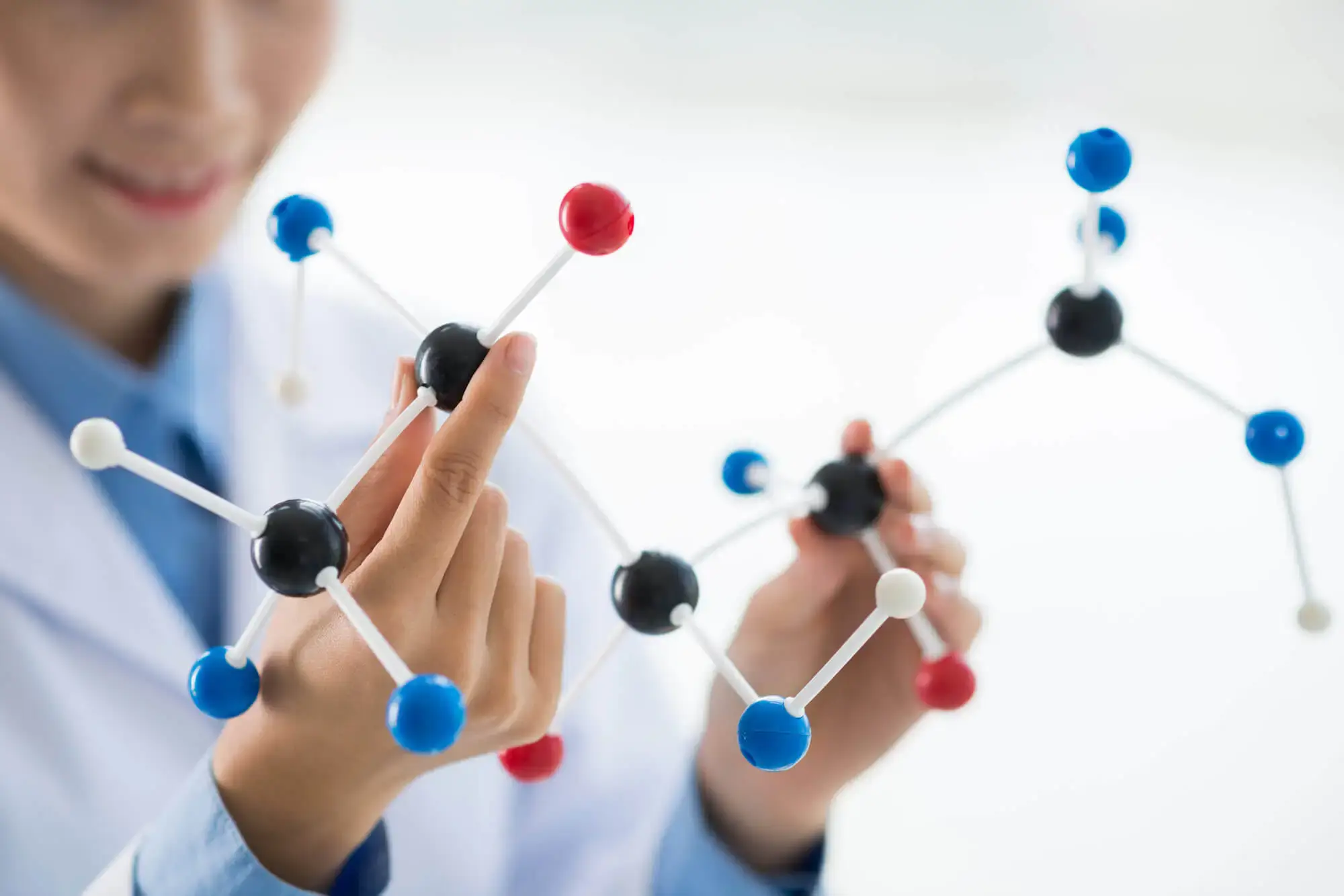The main difference between molecule and compound is that a molecule is made up of two or more atoms of the same elements. A compound, on the other hand, is made up of two or more atoms of different elements. The other significant difference between them is that molecules are homogeneous while compounds are heterogeneous in nature.
In the world of chemical engineering and physical science, molecules and compounds are fundamental concepts that form the basis of our understanding of matter. While molecules are the building blocks, compounds play a central role in chemical reactions and the creation of new substances.
Molecule vs Compound
| Aspect | molecule | Compound | |
| 1. | Definition | A molecule is the smallest unit of a chemical element or compound that retains its chemical properties. | A compound is a substance composed of two or more different elements chemically bonded in fixed proportions. |
| 2. | Composition | Composed of two or more atoms of the same or different elements. | Always composed of two or more different elements. |
| 3. | Bonding | Atoms within a molecule are held together by covalent bonds. | Atoms within a compound are held together by chemical bonds, including covalent and ionic bonds. |
| 4. | Homogeneity | Homogeneous, as all constituent atoms are the same. | Heterogeneous, as it contains different types of atoms. |
| 5. | Separation | Can be separated into individual atoms through chemical reactions. | Cannot be easily separated into its constituent elements without a chemical reaction. |
| 6. | Chemical Formula | Represented using the chemical symbol of each element involved. | Represented using a chemical formula indicating the types and proportions of elements. |
| 7. | Physical Properties | Limited physical properties, as they are based on the element involved. | Diverse physical properties are based on the elements and their arrangement in the compound. |
| 8 | Chemical Properties | Fewer chemical properties, usually limited to the properties of the element itself. | Unique chemical properties distinct from those of the constituent elements. |
| 9. | Role in Chemistry | Serve as building blocks for compounds. | Form the basis of chemical reactions and are the primary focus in chemical reactions. |
| 10. | Examples | Oxygen (O2), Nitrogen (N2), Hydrogen (H2), etc. | Water (H2O), Carbon Dioxide (CO2), Sodium Chloride (NaCl), etc. |
Detailed Explanation of 10 Differences Between Molecule and Compound:
- Definition: A molecule consists of two or more atoms, which can be of the same element or different elements, bonded together through covalent bonds. In contrast, a compound is specifically composed of two or more different elements bonded together in fixed proportions.
- Composition: Molecules can be composed of atoms of the same element, like O2 (oxygen molecule), while compounds are always made up of atoms of different elements, such as H2O (water).
- Bonding: Molecules are held together by covalent bonds, which involve the sharing of electrons. Compounds, on the other hand, are held together by various chemical bonds, including covalent and ionic bonds.
- Homogeneity: Molecules are homogeneous as they contain atoms of the same element. Compounds, on the other hand, are heterogeneous because they contain different types of atoms.
- Separation: Molecules can be separated into individual atoms through chemical reactions, while compounds cannot be easily separated into their constituent elements without undergoing a chemical reaction.
- Chemical Formula: Molecules are represented using the chemical symbol of the element, like O2 for oxygen. Compounds are represented using chemical formulas indicating the types and proportions of elements, such as H2O for water.
- Physical Properties: Molecules have limited physical properties, largely dependent on the properties of the element involved. In contrast, compounds exhibit diverse physical properties based on the elements and their arrangement within the compound.
- Chemical Properties: Molecules possess fewer chemical properties, often limited to the reactivity of the element itself. Compounds have unique chemical properties that are distinct from those of the constituent elements.
- Role in Chemistry: Molecules serve as the building blocks for compounds, while compounds form the basis of chemical reactions and are the primary focus of chemical analysis and research.
- Examples: Some examples of molecules include oxygen (O2), nitrogen (N2), and hydrogen (H2). Examples of compounds include water (H2O), carbon dioxide (CO2), and sodium chloride (NaCl).
That’s it for this post. If you like this article, share it if you like, like it if you share it. You can also find us on Mix, Twitter, Pinterest, and Facebook. Hey man, If you have come this far, do give us feedback in the comment section. It would make my day. You can also make a donation. Your donations will help us to run our website and serve you BETTER. Cheers!!!
You might also like:
- Difference Between Suspension and Colloid in Tabular Form
- Difference Between Emulsion and Suspension in Tabular Form
- Difference Between Homogeneous and Heterogeneous Mixtures with Examples
- Difference Between Miscible and Immiscible Liquids in Tabular Form
